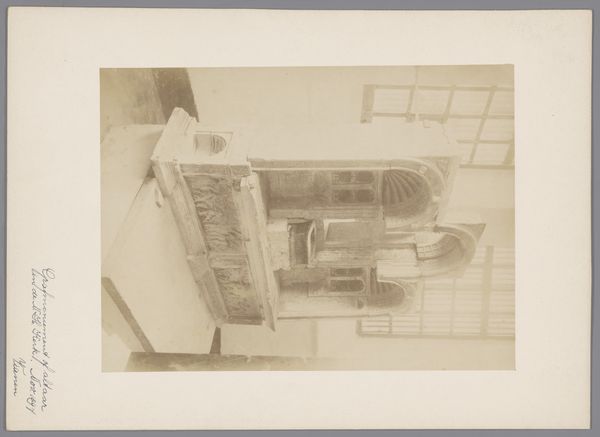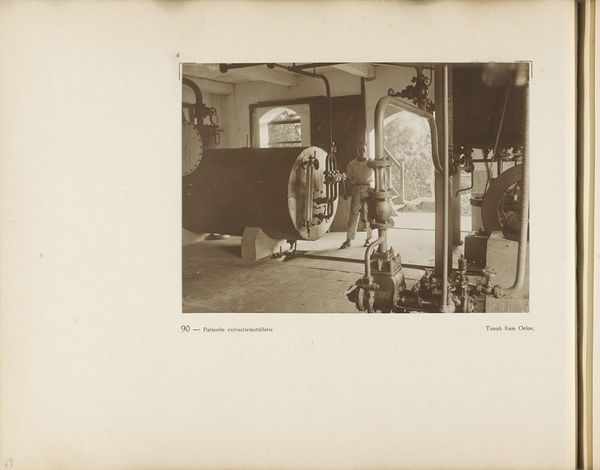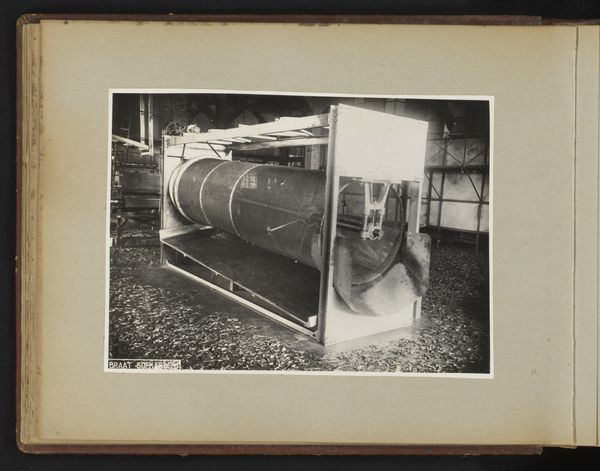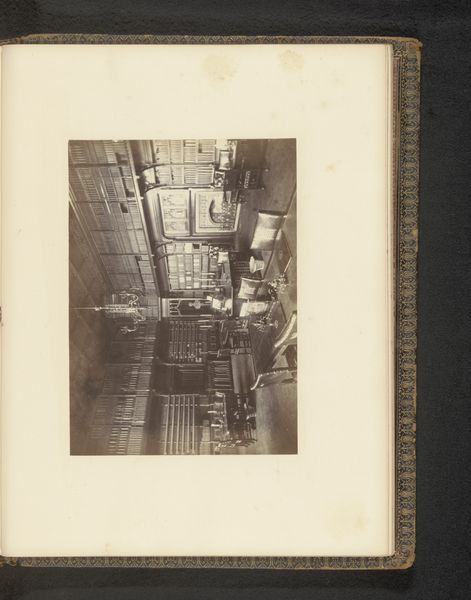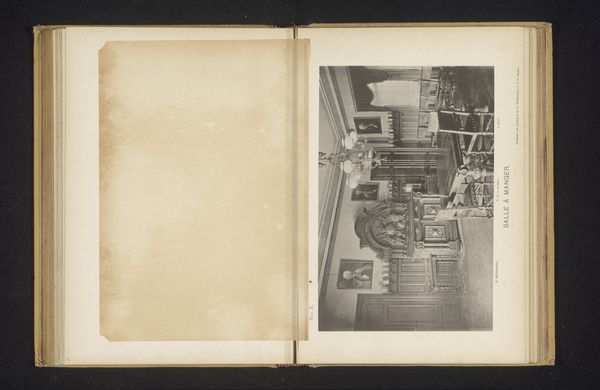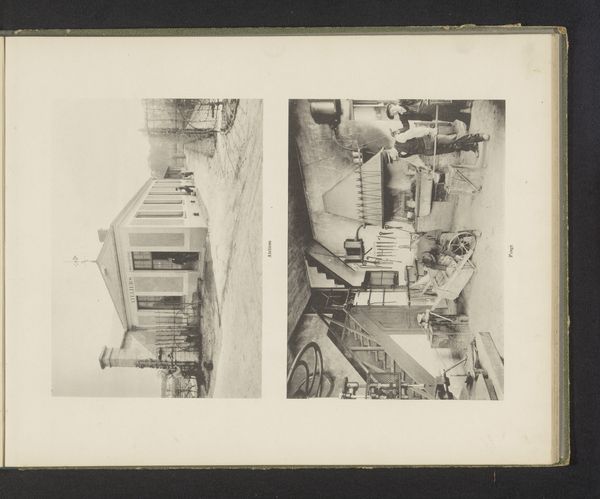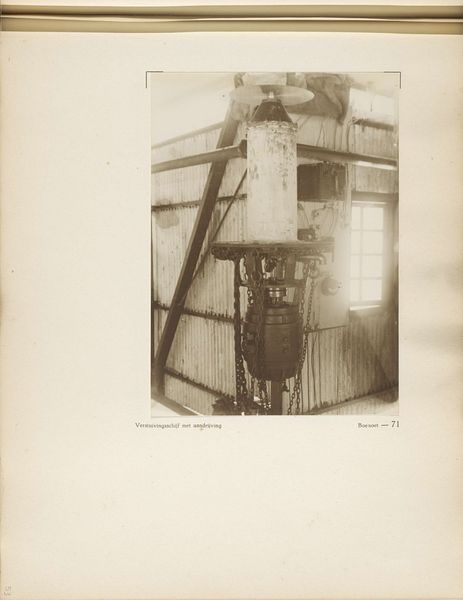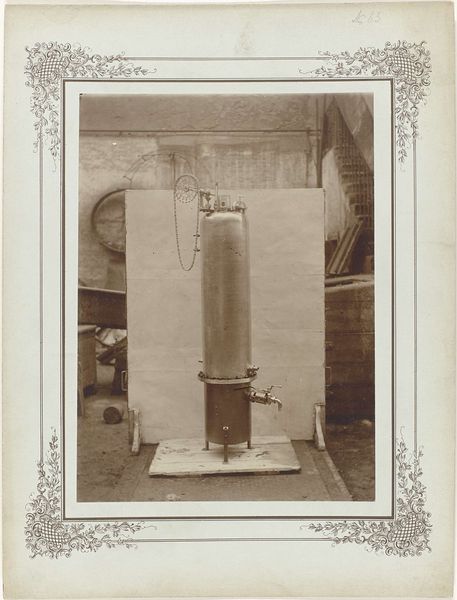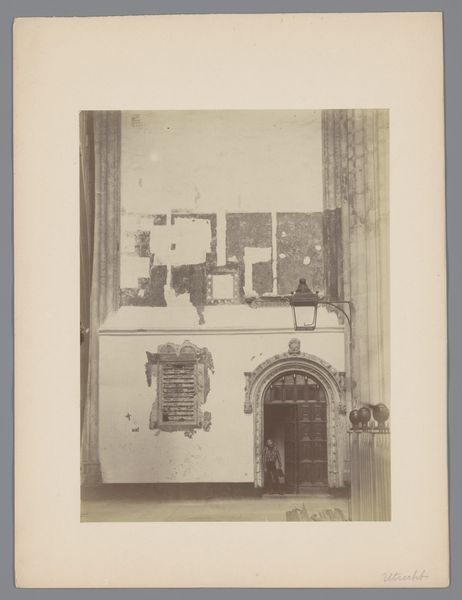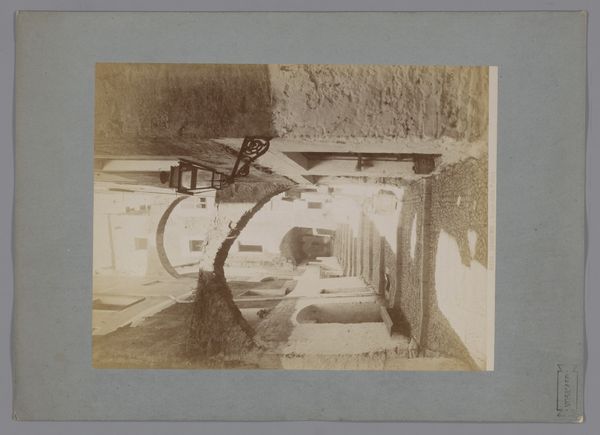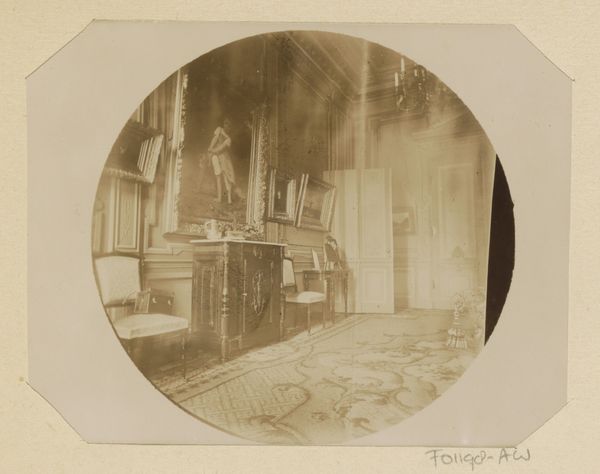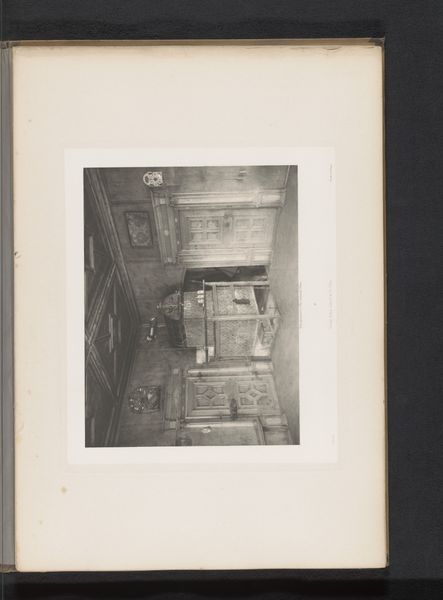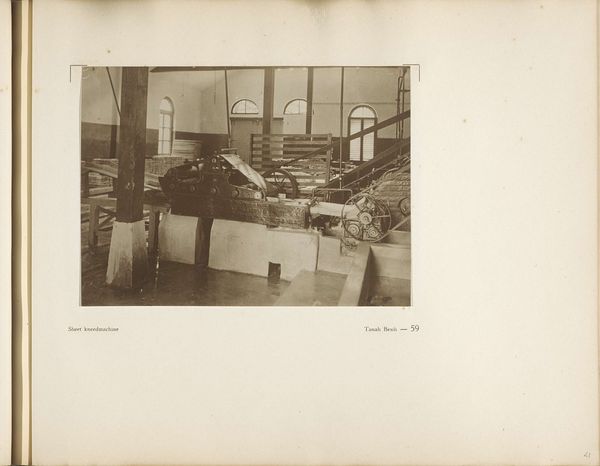
photography, gelatin-silver-print
#
still-life-photography
#
photography
#
gelatin-silver-print
#
cityscape
#
realism
#
monochrome
Dimensions: height 274 mm, width 217 mm
Copyright: Rijks Museum: Open Domain
Curator: Before us we have a gelatin-silver print titled "Machine op de binnenplaats van een kopersmederij," or "Machine in the courtyard of a coppersmithy" dating to between 1880 and 1920, by Franz Woditzka. It depicts…well, a machine in what looks like a courtyard. Editor: My first impression is one of quiet strength. It feels…grounded, almost timeless. Despite being an industrial scene, the monochromatic tones give it a certain meditative quality. I see a lot of symbolism packed into these heavy metal forms. Curator: Symbolism, yes. The machine, dominating the frame, is a powerful, if somewhat ominous, presence. What strikes me is the play of light on metal. The hard lines of the machinery are softened by the diffused light, suggesting something about the taming of industrial might or… or perhaps it is more to do with the quiet dignity of labour? Editor: Or maybe it is about alienation? Look how the human presence is merely hinted at through shadows and architecture in the background. The courtyard feels deserted. The machine seems almost mournful, not powerful. It embodies the transition from individual craftsmanship to industrial production and highlights its potential for exploitation of workers. Curator: I can see that. There's a duality here. It represents both progress and the potential displacement of skilled artisans. It can also reflect the psychological weight that new technologies have on populations. I cannot shake the image of factory workers and the back-breaking work to serve these very machines. Editor: Yes, this speaks volumes about the evolving relationship between humanity and industrialization. The almost palpable texture of the gelatin-silver print adds another layer of meaning to that transition as well, highlighting material qualities now almost lost to technological developments. It begs the question of what the long-term societal consequences of industrial production really are. Curator: Thank you. Reflecting on the relationship of industry and craftsmanship through symbolic imagery reminds us that human hands gave rise to technology in the first place. Editor: Exactly. And critically engaging with art like this serves as a mirror to question current systems, encouraging more ethical and egalitarian structures to develop into the future.
Comments
No comments
Be the first to comment and join the conversation on the ultimate creative platform.
